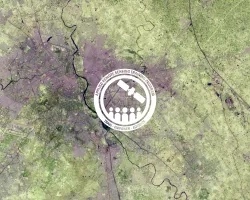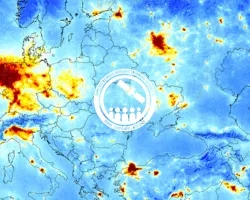Description
The Sustainable Development Goals (SDGs) are an urgent call for action by countries to preserve our oceans and forests, reduce inequality, and spur economic growth. The land management SDGs call for consistent tracking of land cover metrics. These metrics include productivity, land cover, soil carbon, urban expansion, and more. This webinar series will highlight a tool that uses NASA Earth Observations to track land degradation and urban development that meet the appropriate SDG targets.
SDGs 11 and 15 relate to sustainable urbanization and land use and land cover change. SDG 11 aims to "make cities and human settlements inclusive, safe, resilient, and sustainable." SDG 15 aims to "combat desertification, drought, and floods, and strive to achieve a land degradation neutral world." To assess progress towards these goals, indicators have been established, many of which can be monitored using remote sensing.
In this training, attendees will learn to use a freely-available QGIS plugin, Trends.Earth, created by Conservation International (CI), and includes special guest speakers from the United Nations Convention to Combat Desertification (UNCCD) and UN Habitat. Trends.Earth allows users to plot time series of key land change indicators. Attendees will learn to produce maps and figures to support monitoring and reporting on land degradation, improvement, and urbanization for SDG indicators 15.3.1 and 11.3.1. Each part of the webinar series will feature a presentation, hands-on exercise, and time for the speaker to answer live questions.
- Complete Sessions 1 & 2A of Fundamentals of Remote Sensing, or equivalent experience
- Download and install QGIS, version 2.18.15
- Use this exercise for help: Downloading and Installing QGIS
- Download and install the Trends.Earth software. This is a QGIS plugin that only currently works with the Version 2 iterations of QGIS (not version 3 or higher).
- Be sure to read the Before Installing the Toolbox page before Installing the Toolbox
By the end of this training, attendees will:
- Become familiar with SDG Indicators 15.3.1 and 11.3.1
- Understand the basics on how to compute sub indicators of SDG 15.3.1 such as: productivity, land cover, and soil carbon
- Understand how to use the Trends.Earth Urban Mapper web interface
- Learn the basics of the Trends.Earth toolkit including:
- Plotting time series
- Downloading data
- Use default or custom data for productivity, land cover, and soil organic carbon
- Calculate a SDG 15.3.1 spatial layers and summary table
- Calculate urban change metrics
- Create urban change summary tables
This training will be appropriate for local, regional, state, federal, and international organizations interested in generating data used for SDG reporting with satellite imagery.
- Three 90-minute sessions
- This training has been developed in partnership with Conservation International, United Nations Convention to Combat Desertification (UNCCD), and UN Habitat.
In this webinar, attendees will learn about the SDG framework and global agency coordination; become familiar with SDG 15, Target 15.3, and Indicator 15.3.1; learn about the concept of net primary productivity and how to monitor that metric with remote sensing data; and will learn to view and interpret remote sensing data associated with SDG 15 within a QGIS tool developed by Conservation International called Trends.Earth as a hands-on activity. We will have a special Guest Speaker from the United Nations Convention to Combat Desertification (UNCCD).
Materials:
Materiales:
In this webinar, attendees will learn about land cover change and soil organic carbon and how to monitor those metrics with remote sensing; learn about country reporting requirements for SDG 15; and view and interpret local remote sensing data associated with SDG 15 within Trends.Earth.
Materials:
Materiales:
In this webinar, attendees will learn about SDG 11, Target 11.3, and Indicator 11.3.1; learn about the inputs needed for computing SDG indicator 11.3.1; and view and interpret urban mapping within Trends.Earth. This session features a special Guest Speaker from UN Habitat.
Materials:
Materiales:



